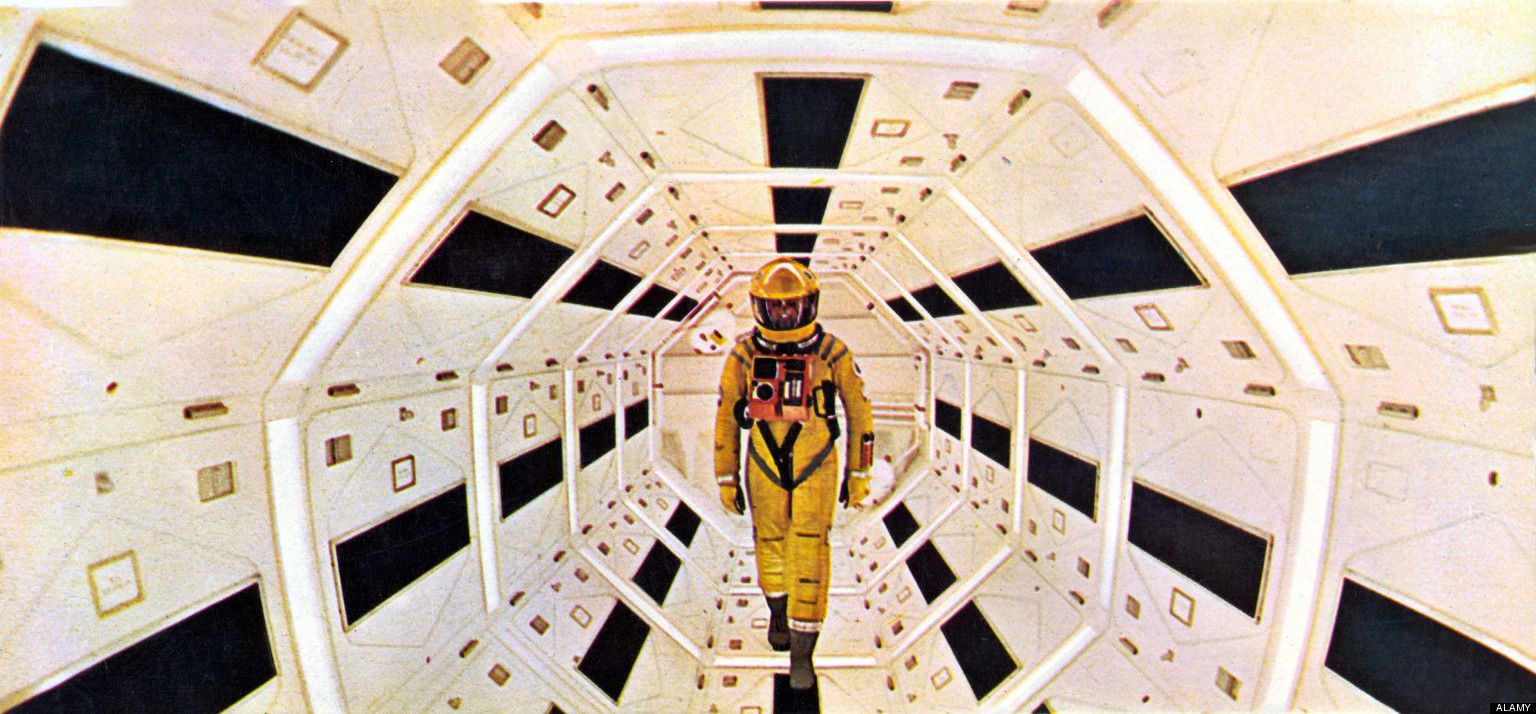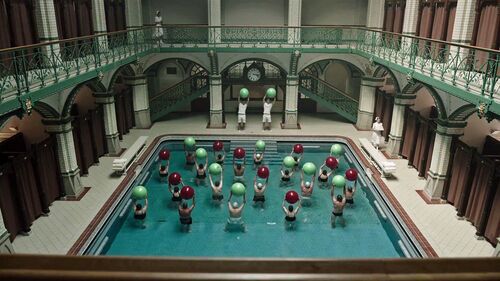
2001: A Space Odyssey - More Than a Film
 First and foremost, I want to express my warning. There are BIG SPOILERS in this review. If you have not yet seen the movie and plan to do so, DO NOT read this article.
First and foremost, I want to express my warning. There are BIG SPOILERS in this review. If you have not yet seen the movie and plan to do so, DO NOT read this article.
Each time I experience a Stanley Kubrick film, I am struck by at least one of two emotions: shock and awe. I purposefully use the word “experience” in place of “watch” because one does not simply view a Kubrick production. A film by Kubrick is masterfully crafted with an innate attention to detail, so much so that linear-minded audiences often times find themselves lost. A film by Kubrick never fails to leave its viewers in astoundment and wonderment. A film by Kubrick uses pristine, elegantly perfected shots to unrestrictedly symbolize some of the most gripping, enigmatic concepts, in this case: man, evolution, and conflict. Of all Kubrick films, “2001: A Space Odyssey” digests the marks of his work most sufficiently. The only word that can truly be used to describe this film, and all Kubrick films alike, is “art.”
This is certainly not the type of movie that you can simply “watch,” or half-heartedly pay attention to while texting your friends. This is the type of film you experience, a film you appreciate. No, it is not action packed, nor is it fast-paced, but it is the single most visually satisfying motion picture I have ever seen. Throughout the movie, I found myself dumbfounded by the fact this was released in 1968 yet still surpassed the quality and effectiveness of any other sci-fi film created in a more modern era. My belief is that in the end, simplicity wins out. Many revelation shots, such as the stars, space, and landscapes, were simply paper or cardboard cutouts, dragged across a backdrop by a fishing line, somewhat resembling puppetry. Kubrick, with no other choice, used this method for his “special effects,” yet when the film was concluded and released, it appeared remarkably realistic, even more so than today’s computer generation. Furthermore, the lighting of each scene was brilliant. Dim, yet colorful lights were used to give off a sense of a sinister futurism that played strongly into the characters and eventual parable that the film was created to portray. Overall, the production itself, as far as cinematography and performance, was more incredible than any other film ever created, a film so ahead of its time that even today, it continues to astonish and bewilder its audiences. I saw this film for the first time about a week ago, after having seen others such as “Interstellar,” and “Alien,” but still “2001: A Space Odyssey” is the single most well made, meticulously perfected film I, and other film fanatics alike, have ever witnessed. No, it is not for the faint of heart, but should a viewer silently observe the film, taking in every second of pure cinematic genius, that viewer would understand the true influence and deeper connotation that makes it so extraordinary.
Further beyond the horizon of “2001’s” unbelievable cinematography is the underlying symbolism expressed unforgettably in every scene of the film. Many people chose to interpret this film in different ways, as it is so open-ended that there is no concrete manner in which to determine its original purpose. Thus, I will relay to you the symbolism that I, personally, have formed ideas about.
First and foremost, I believe that this film is a symbol of Man. From the very beginning to the very end, we see how Man, from its very existence, has struggled, and will continue to struggle. With what? A multitude of things, of course, but most importantly: evolution. This is an incredibly prominent theme in the film. From apes discovering the bone, using it as a weapon, to Drs. Bowman and Poole tussling with their super computer HAL 9000, it is evident that struggle was, and always is, inevitable. The bone, used to kill. The computer, learning to kill. And what a phenomenal theme to portray, as we all struggle with things not only in our daily lives, but in a greater picture as well. It is truly a theme that each and every one of us can easily relate to, a theme that has impotence with all of us. Furthermore, we all evolve at rigorous rates, in personality, in character, in being. This film of Kubrick’s is showing that as we evolve, we become less natural, when we evolve, we devolve. With every situation that seems to be a perfect euphoria, every invention, every idea, there is a struggle, a negative effect. Kubrick portrays this hand in hand with an addition to this theme saying: that is how life should be. Kubrick uses 3 stories to show that it happens over and over, concluding his masterpiece with a highly debated floating fetus. This fetus is meant to symbolize the natural version of humankind, the peaceful version of ourselves. As Dr. Bowman overcomes HAL 9000, symbolizing evolution, he becomes at peace, a true version of himself, reborn in the knowledge he’d gained on his journey through the universe. Kubrick purposefully puts this scene at the very end of the film, using it to show how struggle and evolution rebirth themselves endlessly, yet despite this, we can find the true versions of ourselves as Bowman accomplished.
No, I am not Kubrick. Thus, no...I do not know the true meaning behind his masterpiece. However, I think that is the beauty of the film. We find what we need to find in it. Thank you for reading, please leave your ideas with me. I love all viewpoints of this movie and enjoy discussing it even more. Final decision: an ecstatic 10/10.


